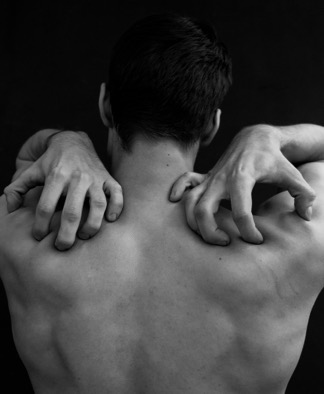If you’re like many weekend warriors out there, you may have a “problem area” that repeatedly gives you issues, annoyingly interrupting your training routine. Learn how the Cumulative Injury Cycle works and how you can break it.
If anyone is old of enough to remember school hose rock, then you will understand the pun of my blog title. As a chiropractor in Scarborough Maine, understanding your dysfunction will help us identify "junction" or location of your injury.
As a sports chiropractor we use functional exams to assess how you move or quality of movement. If you’re like many weekend warriors out there, you may have a “problem area.” This could be your lower back, neck, knee, hip, shoulder, or ankle that repeatedly gives you issues, annoyingly interrupting your training routine.
Does this sound like you? Your tension and pain subsides for a while, so you ignore it. Then you resume your training routine, and BAM!, you’re in the middle of another flare-up! The worst part is that these types of injuries tend to get worse with each occurrence.
The reason behind these annoying repetitive injuries is termed the
Cumulative Injury Cycle or Cumulative Trauma Disorder. If you fail to recognize the warning signs, you may eventually face a much more serious injury. The way to break the cycle is through corrective flexibility training, which you can work on yourself or enlist the help of a trainer, chiropractor, physician, or other health professional.
Steps of the Cumulative Injury Cycle
Step 1: Tissue TraumaTissue trauma can result from an injury such as a strain, or it can simply refer to the micro-tears and contractive tension in a muscle, which are normal results of strength training. The body treats this stress on the tissue as an injury and initiates the repair process. The only way muscles get bigger and stronger is when the body undertakes this healthy, normal repair process on these micro-tears. Excessive tension, however, is NOT normal and healthy. It interferes with the healthy growth of the muscles by allowing them to remain in a shortened, contracted state known as adaptive shortening.
Step 2: InflammationAny trauma to tissues leads to inflammation of the traumatized area. Inflammation triggers the body’s pain response system, which activates protective mechanisms meant to prevent further damage. At the microscopic level, we are talking about activation of tiny receptor sites called muscle spindles that sense the level of tension in the muscle and attempt to protect it by initiating contraction.
Step 3: Muscle SpasmWhen the muscle spindles are stimulated, spasms begin to echo throughout the muscle, creating further tension and shortening.These weak and/or tight muscles lead to excessive Friction, Pressure and Tension to the local muscles, ligaments, tendons, and fascia. In turn, this results in Decreased Circulation and Swelling and Hypoxia (lack of oxygen) to the area.
Step 4: AdhesionsAlso known as “knots”, adhesions are the result of this hypoxic state. Formation of adhesions and/or scar tissue occurs to the area which decreases the function of the surrounding soft tissue structures. These adhesions can be described as tight nodules within the soft muscle tissues. They reshape the muscle itself, creating an inelastic matrix of roadblocks which prevent the muscle from contracting and releasing as it should. Untreated adhesions can become permanent features of the soft tissue as the tissue repairs itself to cope with the demands of on our bodies. Inflexible tissue causes postural compensations as the body attempts to find ways to move itself in spite of its new limitations.
Step 5: Altered Neuromuscular ControlThese permanent adhesions cause the body to move in fundamentally different ways. The body wants to move, and it will find a way to do so even if it means using muscles and joints in suboptimal ways, which deviate from their intended functions. This is why our bodies compensate to provide movement for a lack thereof.
Step 6: Muscle ImbalanceWhen repeated patterns of compensated movement occur the body moves in a suboptimal manner over time, the faulty patterns will be built into the muscles and joints themselves and the Cycle Repeats and reinforces itself. As you continue to exercise, you place stress on the body in its new compensated position. The compensations are further cemented in place by repetitions of the cycle.
Pattern Overload and the Cumulative Injury CycleThe cumulative injury cycle is directly tied to the concept of pattern overload, which means placing repeated stress on the body through performing the same motions. Poor posture combined with pattern overload is the recipe for repetitive stress injuries, including but not limited to bursitis, tendonitis, tenosynovitis, carpal tunnel, and more.
About Dr Victor St John
Dr. Victor is co-owner of Mend Health & Wellness located in Scarborough, Maine providing elite quality care for athletes and athletic-minded clients of all ages. He is also a performance enhancement specialist through the National Academy of Sports Medicine (NASM-PES).
Tags: soft tissue, sports chiropractor, Portland Maine





